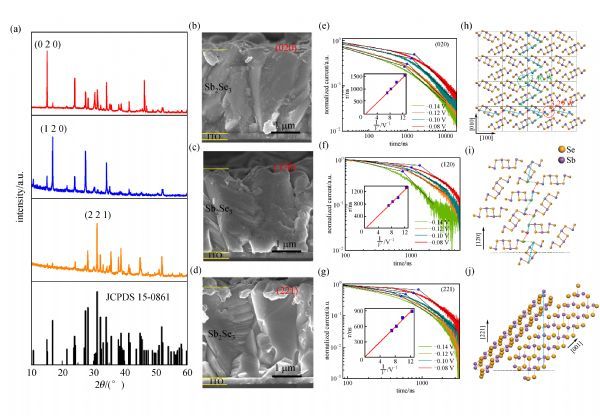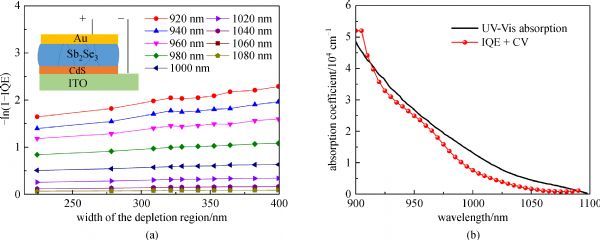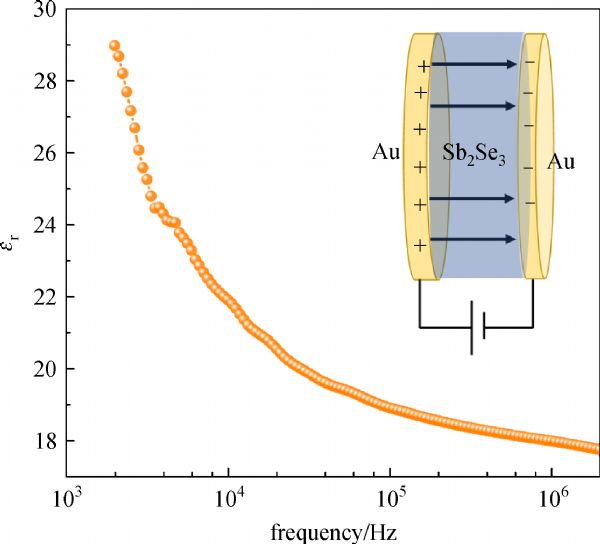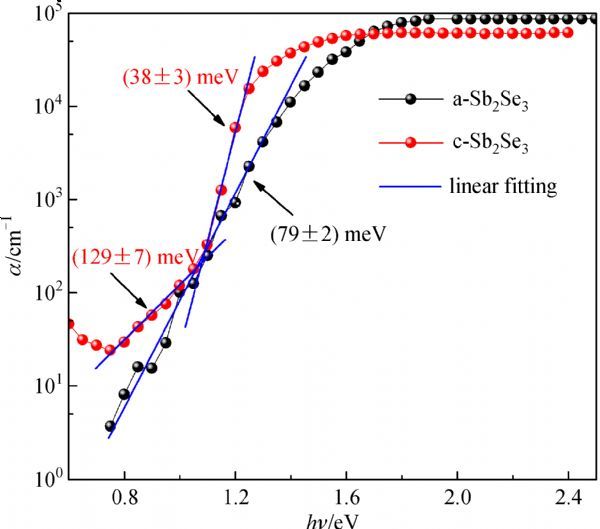where
D e, c is the electron diffusion coefficient along
c-direction,
μ e, c is electron mobility along
c-direction,
k B is the Boltzmann constant,
T is the absolute temperature,
q is the elementary charge, and
τ e is the electron lifetime. From the mobility (16.9 cm
2·V
−1·s
−1) and lifetime (67 ns) parameters, we obtain the electron diffusion length of (1.7±0.2)
mm along
c-direction. Since both the electron lifetime and mobility are strongly carrier-density dependent, and both the TA and TOF measurement were carried out under high illumination, we believe as-calculated diffusion length is valid only under strong irradiation. We thus further applied the bias voltage dependent IQE to deduce the diffusion length under weak light illumination (xenon lamp spectrum of ~150
mW·cm
−2 during IQE measurement) [
28]. The device structure for extracting diffusion length is ITO/CdS/Sb
2Se
3/Au (inset in Fig. 4(a)) with PCE of 5.4% (
Voc= 0.391 V,
Jsc= 25.2 mA·cm
−2 and
FF = 54.7%). The orientation of thin film Sb
2Se
3 was [221]. Extraction from this technique was done using the following steps in sequence: (1) measuring EQE(
λ ,V) as a function of wavelength (
λ) at a series of voltage bias (
V); (2) determining the reflectivity
R(
λ) and transmittance
T(
λ) as a function of wavelength; (3) calculating internal quantum efficiency, IQE(
λ ,V) using the relation of IQE(
λ ,V)
= EQE(
λ ,V)/[1−
R(
λ)−
T(
λ)] (the test method was as shown in supplemental material [
24]); (4) obtaining the voltage dependence of depletion width
x d(
V) from capacitance-voltage (
C-V) measurement; (5) obtaining the dependence of
x d on IQE at each
λ; (6) extracting diffusion length (
L e) and absorption coefficient (
α) from the expression given by Eq. (5) [
29].










